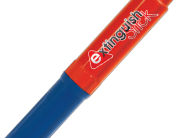Fire extinguishers are portable and designed to help prevent small fires from spreading into uncontrollable fires. Extinguishers should only be used in cases where a fire is small enough to be manageable and as long as you have a clear means of escape open to you should the extinguisher be unable to quench the fire. When choosing a fire extinguisher you should also know that different types of extinguishers are meant to deal with different types of fires and it is necessary to know what type of extinguisher will treat which type of fire.
The A B Cs of Fire Extinguishers
Fire extinguishers are classified by the type of fire they are designed to treat. Letter values are given to extinguishers to signify the type of fire they are useful in extinguishing. These classifications are A, B. C. D and K.
- Type A Fire Extinguishers- Type A fire extinguishers are used to treat fires from common combustibles these combustibles include wood, cloth, plastic, and cloth. These type of extinguishers normally use water as the fire fighting agent. Class A extinguishers are also given a number that tells you how much water the extinguisher holds. Type A fire extinguishers uses pressurized water to put out the fire and weighs about 25 pounds.
- Type B Fire Extinguishers- Class B extinguishers are used to fight small fires based on flammable liquids. These liquids include gasoline, kerosene, oil, and oil based paints making this type of fire extinguisher perfect for use in your garage. Class B fire extinguishers also have a number, however the number on these type of extinguishers tell you the number of square feet that the extinguisher will cover. Co2 is often used in type B fire extinguishers and these fire extinguishers can weigh anywhere from 5 to 100 pounds.
- Type C Fire Extinguisher- The type C fire extinguisher is used to fight electrical fires. These types of fires include electrical appliances, power tools, circuit breakers, wiring, and wall outlets. This type of extinguisher is the only type of fire extinguishers that should be used for electrical fires due to the high risk of shock and electrocution. Type C fire extinguishers use either CO2 or dry chemicals to put out the fire. However, it should be noted that the dry chemicals used in some of these extinguishers may leave a residue on electrical wires that can damage them.
- Type D Fire Extinguishers- The Class D fire extinguishers are used primarily for extinguishing combustibles metals and hazardous materials. These fire extinguishers are rarely found in homes and most often useful in factories or laboratories where there is a greater need for this type of extinguisher. Class D fire extinguishers normally use Sodium Chloride in a dry powder form.
- Type K Fire Extinguishers- Type K fire extinguishers are used in places where where combustible cooking fluids such as oil and grease could be an issue. While these types of fire extinguishers are most often used in restaurant and cooking school kitchens as well as catering service. However, more recently Class K fire extinguishers are finding their way into many homes. Type K fire extinguishers may contain dry or wet fire agents and should never be used unless the electricity is killed prior to using.
- Combination Fire Extinguishers- There are also combination fire extinguishers used to deal with type A, B and C fires. These extinguishers weigh between 5 and 20 pounds and uses dry chemicals, but often leave a sticky residue that is difficult to remove and can be harmful if not completely cleaned up.
Enter the Extinguish Stick
 The newest type of fire extinguisher is called the Extinguish Stick and this extinguisher is extremely lightweight weighing only about 16 ounces. It uses a Potassium Nitrate compound to extinguish the fire and does by using a non-pressurized system to disperse the chemical.
The newest type of fire extinguisher is called the Extinguish Stick and this extinguisher is extremely lightweight weighing only about 16 ounces. It uses a Potassium Nitrate compound to extinguish the fire and does by using a non-pressurized system to disperse the chemical.
The Extinguish Stick is multipurpose able to put out fires classes A, B, C and E. The lightweight and small size of this fire extinguisher makes it ideal for various rooms in your home, your boat, and even your car as it is small enough to fit into the glove box.
In addition, once dispersed the Extinguish Stick doesn’t leave behind any residue that can be difficult to remove and it is environmentally friendly and can be use around both fresh and salt water. Best of all unlike other fire extinguishers that need to be inspected monthly, the Extinguish Stick doesn’t need any inspection or maintenance at all.
Choosing the right fire extinguisher to best be able to deal with the type of fire you at risk for is essential in protecting your home and your family. Choosing the Extinguish Stick for those smaller places in your home, boat or car where fires may occur can give you the protection you need and want.






Leave A Comment